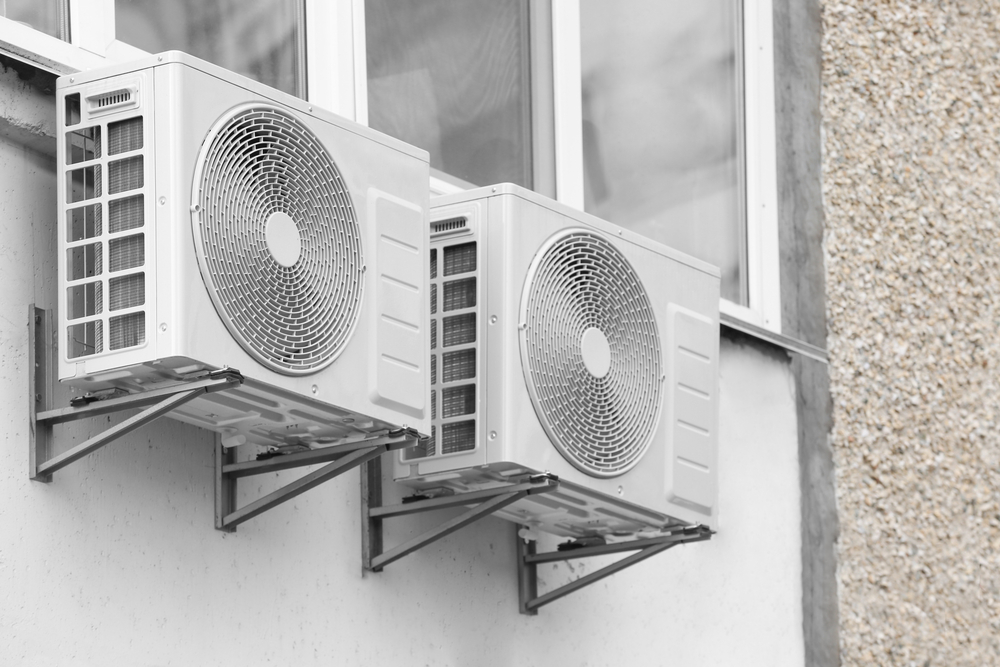Homeowners often struggle with choosing the ideal HVAC system for their home. Does it make sense to upgrade your existing system? Should you wait until your old one breaks down? Are you concerned about the environmental impact that your HVAC systems have? No matter where you are in terms of purchasing a new system, there are several reasons that you should consider investing in one of the ductless split systems available on the market. These systems offer a compelling mix of advantages that can’t be matched by most other designs. Below, we outline the six best reasons that you should consider making the switch to a ductless split system.
Ductless Split Systems are Space-Efficient
As implied by their name, ductless split systems make do without ductwork. Depending on how large your house is, that can save you a lot of space. The most common ductless split, a mini-split system, has two primary components: the interior air-handling unit and the exterior compressor or condenser. These units are joined by a conduit that houses the miscellaneous parts to deliver power, refrigerant, and accumulated moisture. The conduit itself is relatively slim and easily fits within your walls without any significant architectural considerations.
You can tuck these units into convenient locations, with the air handler on your wall near the ceiling, usually above a doorway or other location. You can set the condenser outside and hide it behind a fence or plants in your garden. Mini-split systems come in either single or multi-zone units so that you can cool multiple rooms with just a few visible components.
They Have Lower Global Warming Potential
Ductless systems are much more energy-efficient than most central heating systems. When you use a ductless heat pump, you can even shuffle air from one part of your house to another for temperature control, removing the need to heat or cool that air with a fuel source. Most ductless systems take advantage of your existing electrical connections to control your home’s temperature without needing natural gas or heating oil. Depending on your local energy supplier, you can source your electricity from renewable sources such as wind or hydroelectric. The most efficient systems may be more expensive to install, but you can reduce your impact further by taking advantage of geothermal temperature controls if your home is near the correct land features.
They Can Both Heat and Cool
Despite their compact size, mini-split systems offer you the chance to both heat and cool your home with a single unit. Free up space in your basement or utility room by getting rid of the large central units and rely on room-based split systems. These systems use fans to direct the air where it’s needed, so you can quickly make your rooms more comfortable both during the summer and winter.
They Save You Money Over Time
While some people appreciate a reduced environmental impact, others put more value in how much money they can save. The good news is that ductless systems do both at once. By reducing your energy use, they can save you money month after month on your utility bills. Over time, these units may pay for themselves and leave you more money to spend on other important expenses around your home.
They Give You More Control
Unlike basic central heating and cooling systems that only let you set a general temperature; ductless mini-split systems give you control over each zone independently. When you install a multi-zone system, you can turn on some units and leave others off, or change the temperature accordingly. This feature is particularly helpful for those who have some rooms with lots of windows that may produce drafts or temperature bleeding between the inside and outside. You can keep the units closer to the center of your house at a lower level while cranking up those near the edges of your home. Give your system the power it needs, exactly where and when it needs it.
They Eliminate Carbon Monoxide Risks
Safety-minded homeowners appreciate that ductless systems don’t use natural gas or heating oil for another reason: carbon monoxide gas. CO gas is a natural byproduct of heating combustion, so central heating systems must have a way to get rid of it. If the system ever malfunctions, then it may not be able to do so reliably, which can produce a risk for your family. It’s worth noting that the risk is minimal to the point in well-maintained systems that receive frequent checkups, but you can eliminate the risk entirely by using a ductless system.
How to Get Ductless Split Systems
Whether you’re already sold on ductless split systems or have more questions before you decide, your next step is the same: contact your local HVAC contractor. These well-trained individuals can help you assess the impact that making a switch will have on your home and heating expenses. When you find a trustworthy contractor, they can help you determine the ideal time to make the switch and which system to use.
